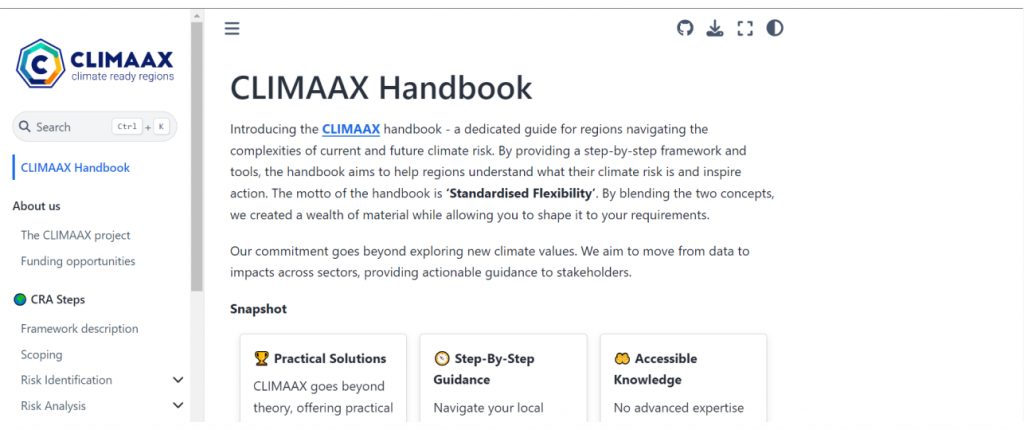The core of the CLIMAAX project is development of a Methodological Framework and a supporting Toolbox to guide the users through climate risk assessment. The software implementation of the combined Framework and Toolbox is known as the CLIMAAX Digital Handbook.

The CLIMAAX Methodological Framework is designed to guide regions in conducting inclusive and harmonised climate risk assessments (CRAs). It translates the ambitions of the EU Mission on Adaptation towards transformational adaptation strategies that build resilience into practice by supporting the advancement and implementation of climate risk assessments.
With the conceptual background informing the operational framework steps it serves as a comprehensive guide, providing support across various critical areas of climate risk assessment. It emphasizes the importance of stakeholder engagement processes, promoting collaborative and inclusive development of CRAs, thus optimizing it for strategic planning efforts.
Additionally, it assists in identifying and prioritising hazards as well as relevant climate and socio-economic scenarios for the CLIMAAX Toolbox which may have significant societal value for the region. In essence, the Framework offers a structured approach to navigate the different complexities of a CRA, thus laying the foundation for adaptation, resilience and informed decision-making in the face of climate change challenges.
The CRA Toolbox complements the Framework in its quantitative Risk Analysis containing access to data, risk assessment algorithms and the cloud space for work, designed to support the compilation of regional climate multiple risk assessments. The Toolbox is structured to accommodate the various users’ needs:
- General information and visualisation of hazards, exposure, and vulnerability data for new users to get familiar with the process of climate risk assessments;
- Advanced users can explore pre-existing risk workflows for selected natural hazard profiles and apply these workflows to their own European region;
- Expert users can customise risk workflows and include their own local data on hazard, exposure, and/or vulnerability, and adjusted risk assessment methods.
The risk workflows in the toolbox are stratified by hazard profile, with several methods for risk assessment included in the Toolbox based on the type of hazard and the availability of data. Currently, we include methods for flood, drought, heatwave, wildfire, windstorm and snow. The different assessment methods follow a stepwise data processing scheme to calculate risk as a combination of hazard, exposure and vulnerability.
Moreover, the Toolbox provides access to pan-European hazard, exposure, and vulnerability data for the implementation of the different risk assessment methods. These European datasets include reference hazard climatologies and climate projections, and data on exposure and vulnerability such as land use, building types, age, education, income, healthcare access, settlements, and infrastructure.
The CLIMAAX Digital Handbook is being developed primarily for the successful participants of the CLIMAAX Open Call for regions. However, it is important to note that all the materials within the handbook are freely available for anyone to access and use.
Additionally, all data used and generated by CLIMAAX partners is openly accessible, and the code within the toolbox is provided under an open-source license. The development of these tools will persist throughout the entirety of the CLIMAAX project, allowing for ongoing improvements based on user feedback (by Milana Vučković, ECMWF).


